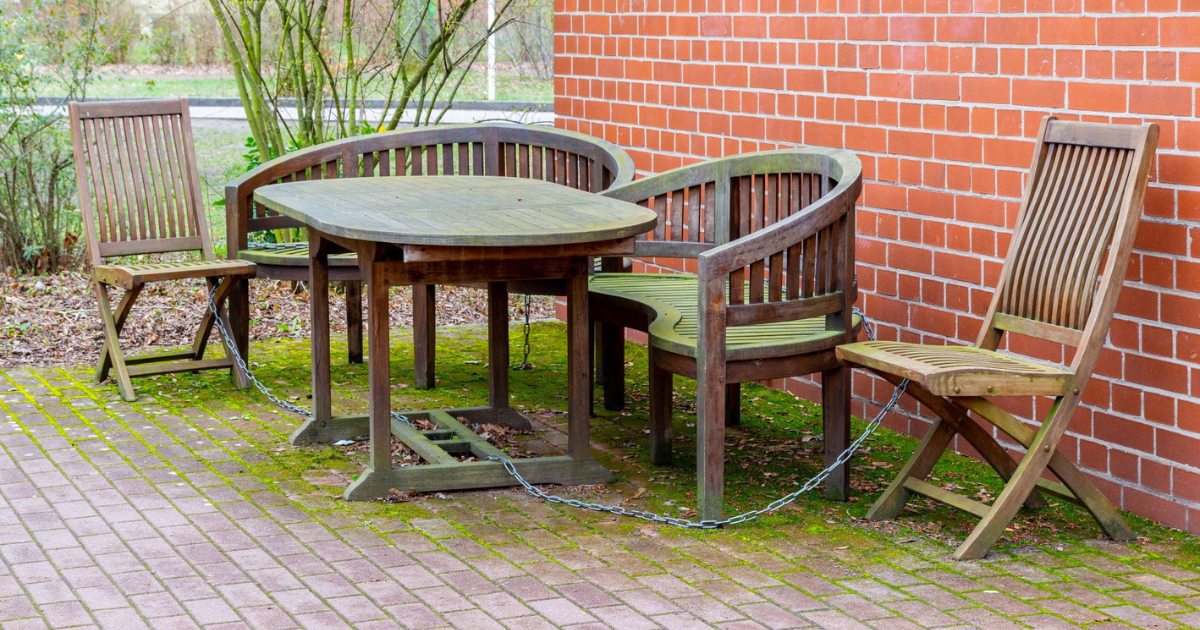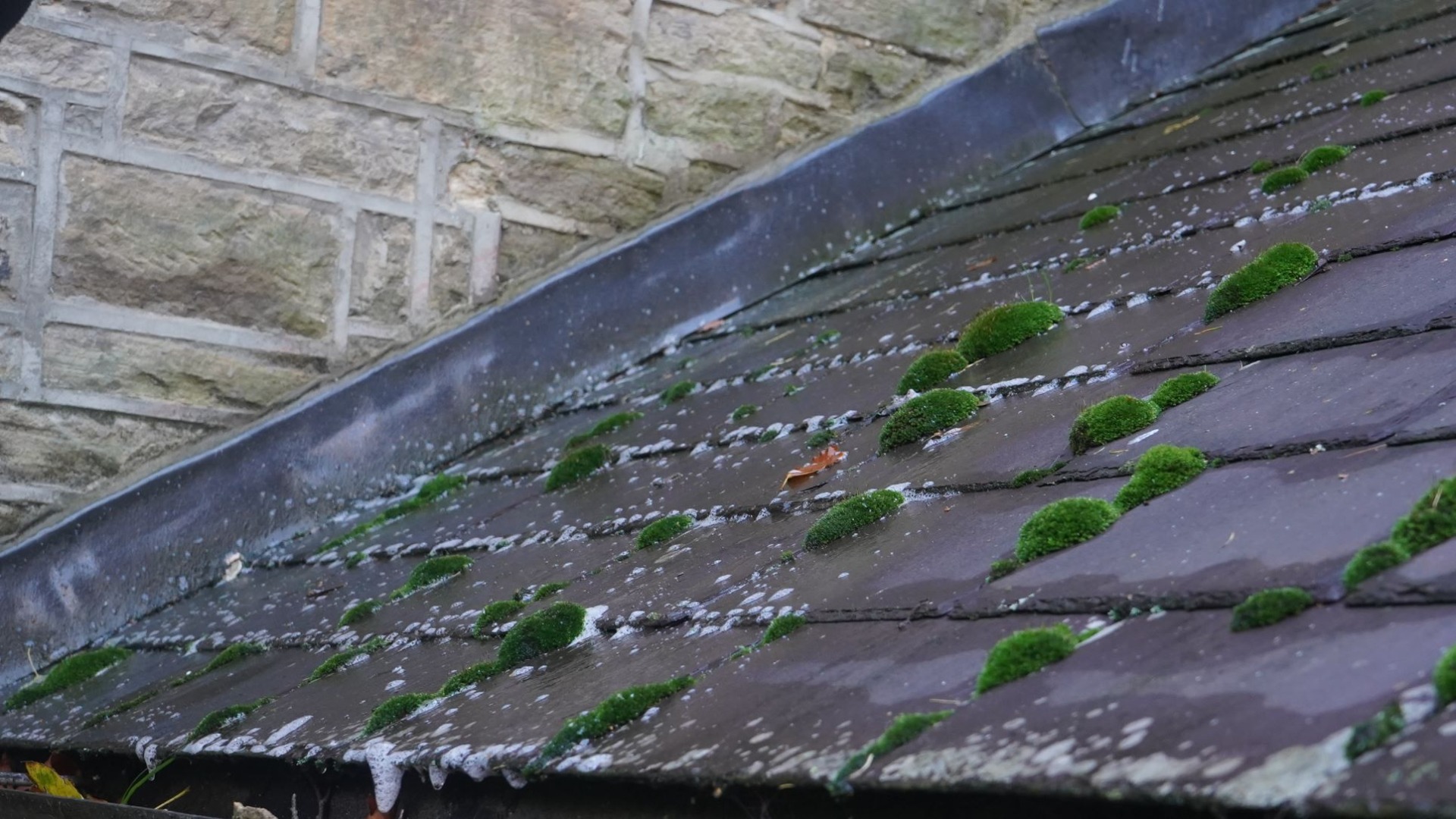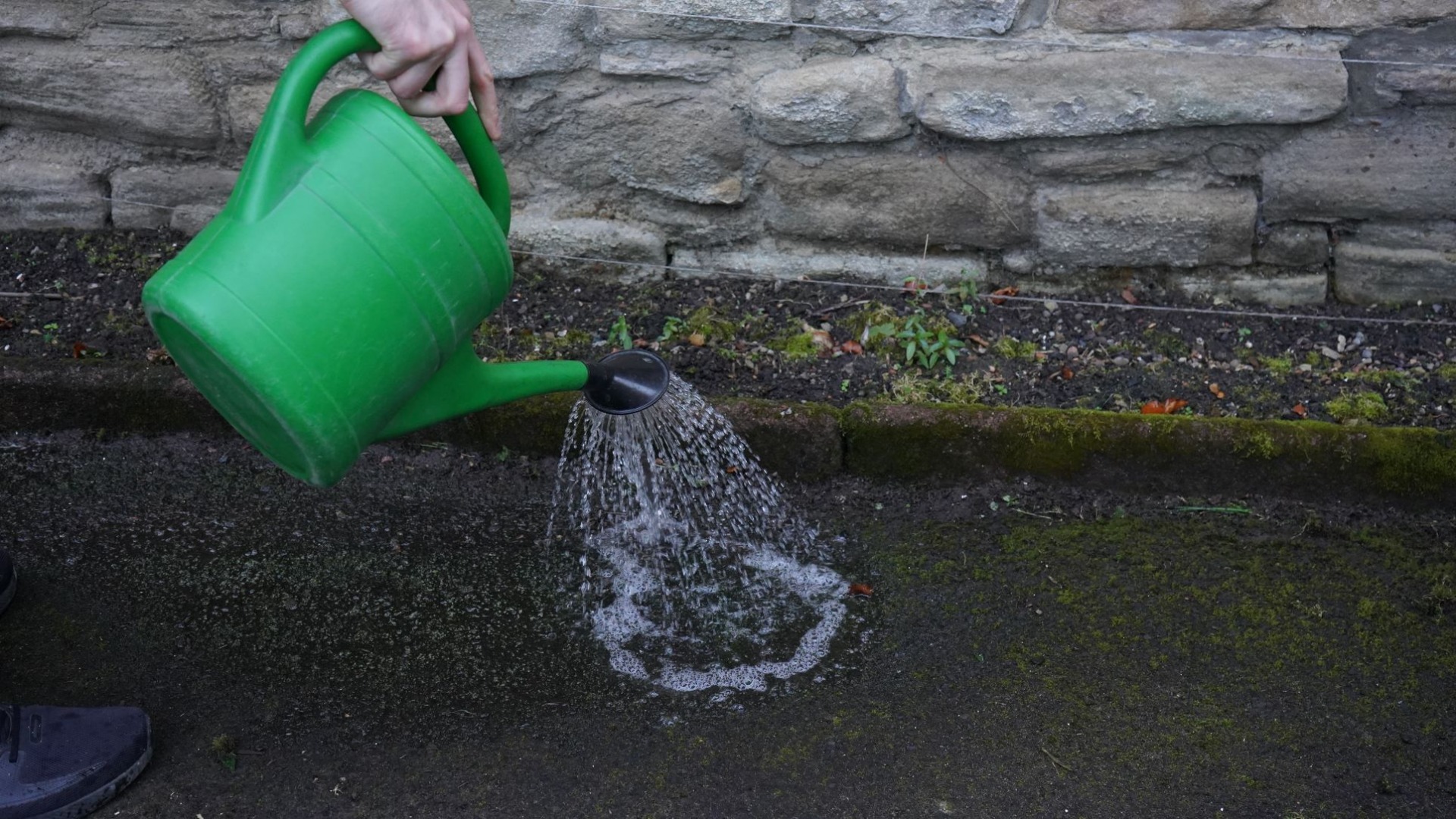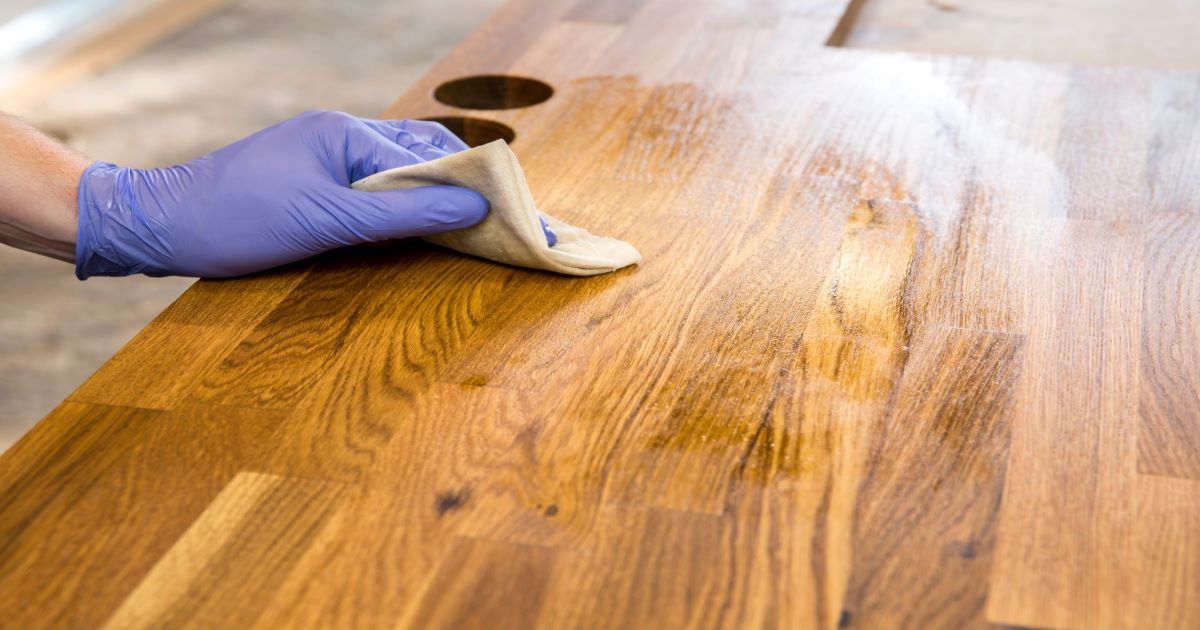Where Does Green Staining Appear?
Take a look at your garden and outdoor spaces. Check what is looking a bit green and unsightly.
At this time of year, you will probably notice quite a bit of green algae, moss, mould, and lichens growing on your stone patios, fencing, decking, greenhouses, walls, driveways, roofs, concrete areas and even garden ornaments. Whilst it is generally harmless, it does not look terribly nice, and a build-up of green growth can be dangerous when it becomes slippery.
Why Do Moss and Algae Grow?
The main cause of green staining is damp conditions and lack of sunlight. Algae, moss and mould are organisms that thrive in shady, damp conditions. The green deposits that arise are often more noticeable in winter or after a wet period. Moss and algae also tend to be more prominent on irregular and soft surfaces rather than straight, hard ones.
How Do I Remove Green Staining from Patios, Driveways and Fencing etc?
There are several ways that you can get rid of green mould, moss, lichen and algae.
- One way relatively quick approach is to use a pressure washer. However, the main disadvantage is that using a pressure washer can also cause long term damage to the surface, including removing grout on walls and patios. Pressure washing can also spread the growth to other areas of the garden.
- You could use a white vinegar and water mixture, but this can be harmful to plants and grass if it is not diluted enough. The acid in the vinegar can also react with or damage the surface, especially stone or concrete, so always test out on a small area first.
- Another alternative is to use a bleach:water mix. Care needs to be taken, as it can harm plants, grass and wildlife although you can spray greenery nearby with water before applying so that it dilutes any overspray. Whilst it does kill the algae for now, it is not an eco-friendly option and the chlorine can sometimes change the colour and appearance of the surface.
- A mix of soap, baking soda and hot water and lots of scrubbing might also work, but it is very time consuming and you may need to go over the area several times.
- The best alternative is to use a specialist solution such as our Green Growth Remover which has been developed for this purpose. The added benefit of using a specialist solution is that it not only contains ingredients that kill the moss and algae, but it will also slow down regrowth.
How Does It Work?
There are many different types of ‘spray and leave’ products on the market.
Some - like our Green Growth Remover - are water based and some contain bleach or acid which, although fast working, can damage the actual surface.
With our Green Growth Remover, just spray and walk away. Use either a pump sprayer or watering can depending on the type of surface. In five days, the green will just disappear as the solution continues to work when it is dry. There is no need to scrub or rinse off. For lichen, you will need to wait up to three months for it to disappear.
How to Stop Walls, Fences and Patios Going Green
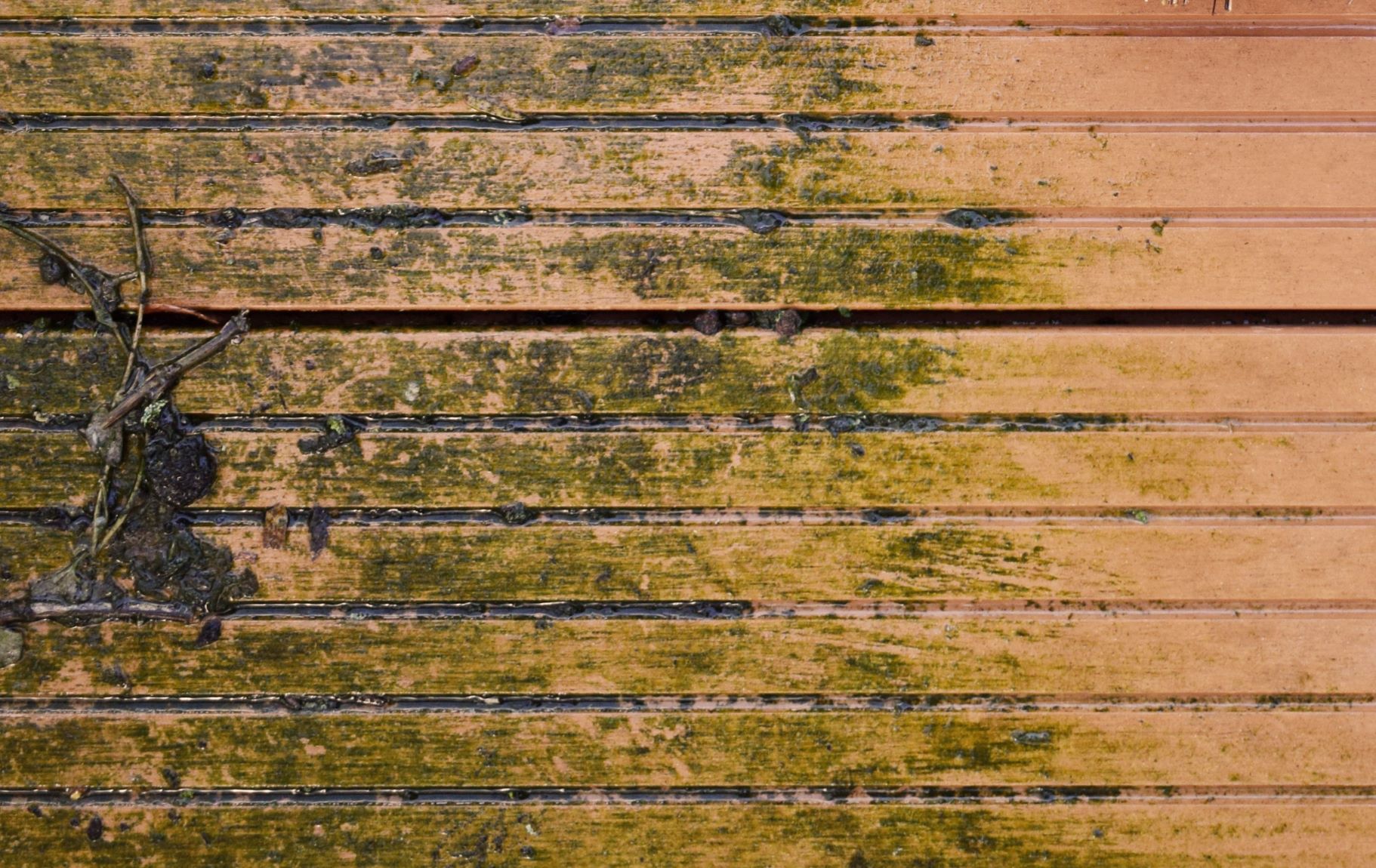
With our unpredictable and varied climate in the UK, it is almost impossible to prevent the growth of algae and moss on fences, driveways, walls etc. However, here are a few simple steps that you can take to help reduce build up:
- Regular maintenance. Clean the area or surface regularly and use a specialist green stain remover, such as our Green Growth Remover, which helps prevents regrowth and delays it coming back.
- Good drainage and air circulation. Don’t place your favourite pine wood planter in a dark, shady corner. Move your patio furniture around regularly. Prune back overhanging bushes and trees. And if you are having a new patio installed, then make sure it is built on a slight slant.
- Choose the right materials. When erecting new fencing or building a new patio, opt for flat, hard and less porous materials as these will limit the air and moisture circulating which will result in algae growth. For stone, choose slate rather than sandstone. For wood, select hardwoods (such as teak) rather than softwoods (e.g. pine).
- Use a sealant. Once the surface is clean, apply a sealant to prevent moisture from entering. For example, use our Clear Decking Oil or Teak Oil on outdoor wooden surfaces.
What About the Environment?
Our Green Growth Remover is water based and biodegradable so is child, pet and wildlife friendly. It contains no bleach or acid.
Top Tips for using Green Growth Remover
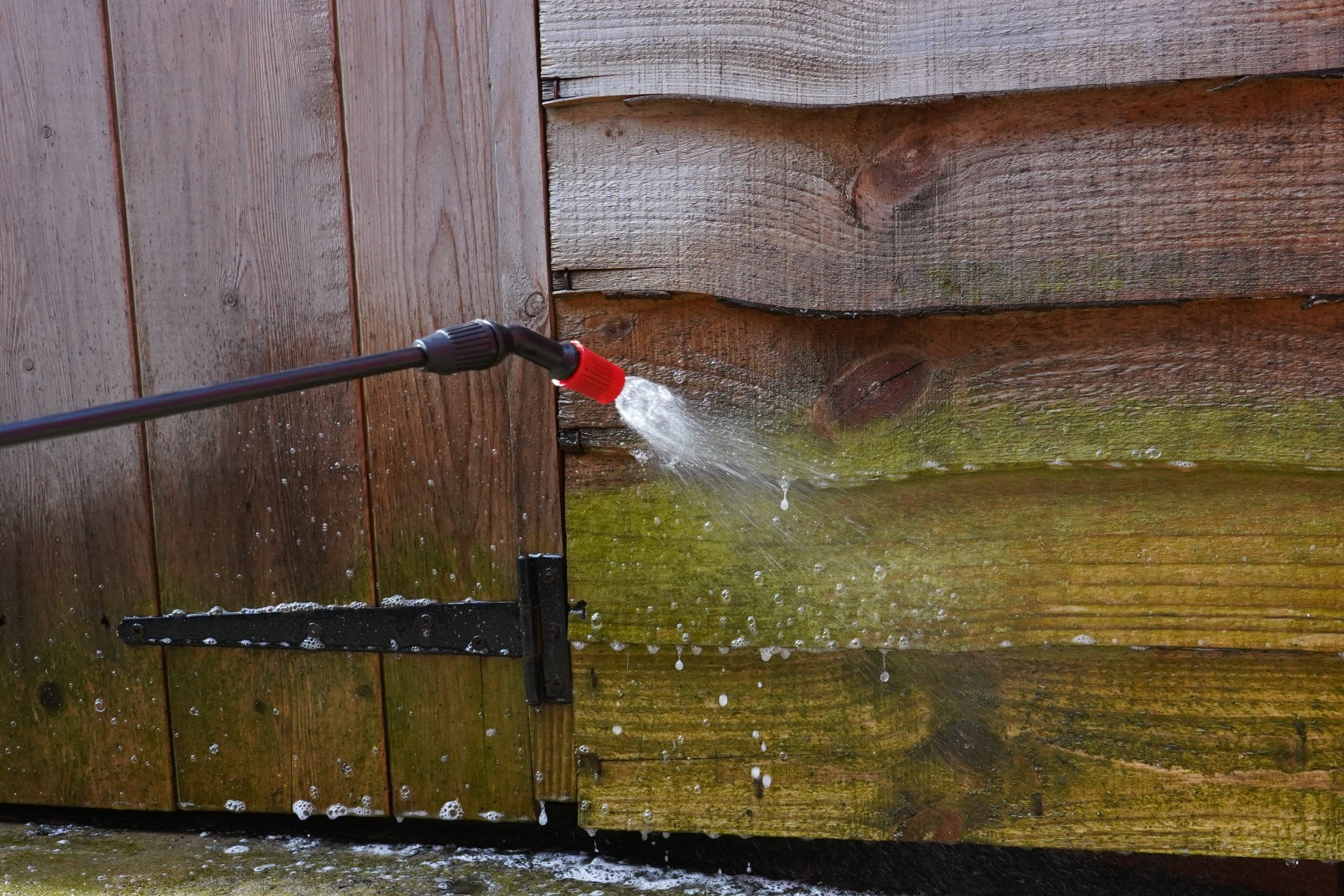
Finally, we’ve put together a few top tips on using our Green Growth Remover:
- Always brush the surface first to remove any loose debris.
- Don’t forget to dilute the product as per the instructions!
- Try not to use it when it’s windy as the spray will go everywhere.
- Make sure you apply the product wherever the green is, and don’t miss patches as you will need to reapply it later on.
- Ensure you soak the green growth area. And if you are using a sprayer, rather than a watering can, make sure you use enough liquid. It can be very easy to spray just a small amount so that the surface is damp not wet.
- Use it on a dry day and not in damp conditions; for best results, the weather forecast for the next few days should not be rainy.
- Make sure the surface is completely dry before applying the Green Growth Remover.
And don’t forget to take some Before & After photos and enter our monthly competition.



